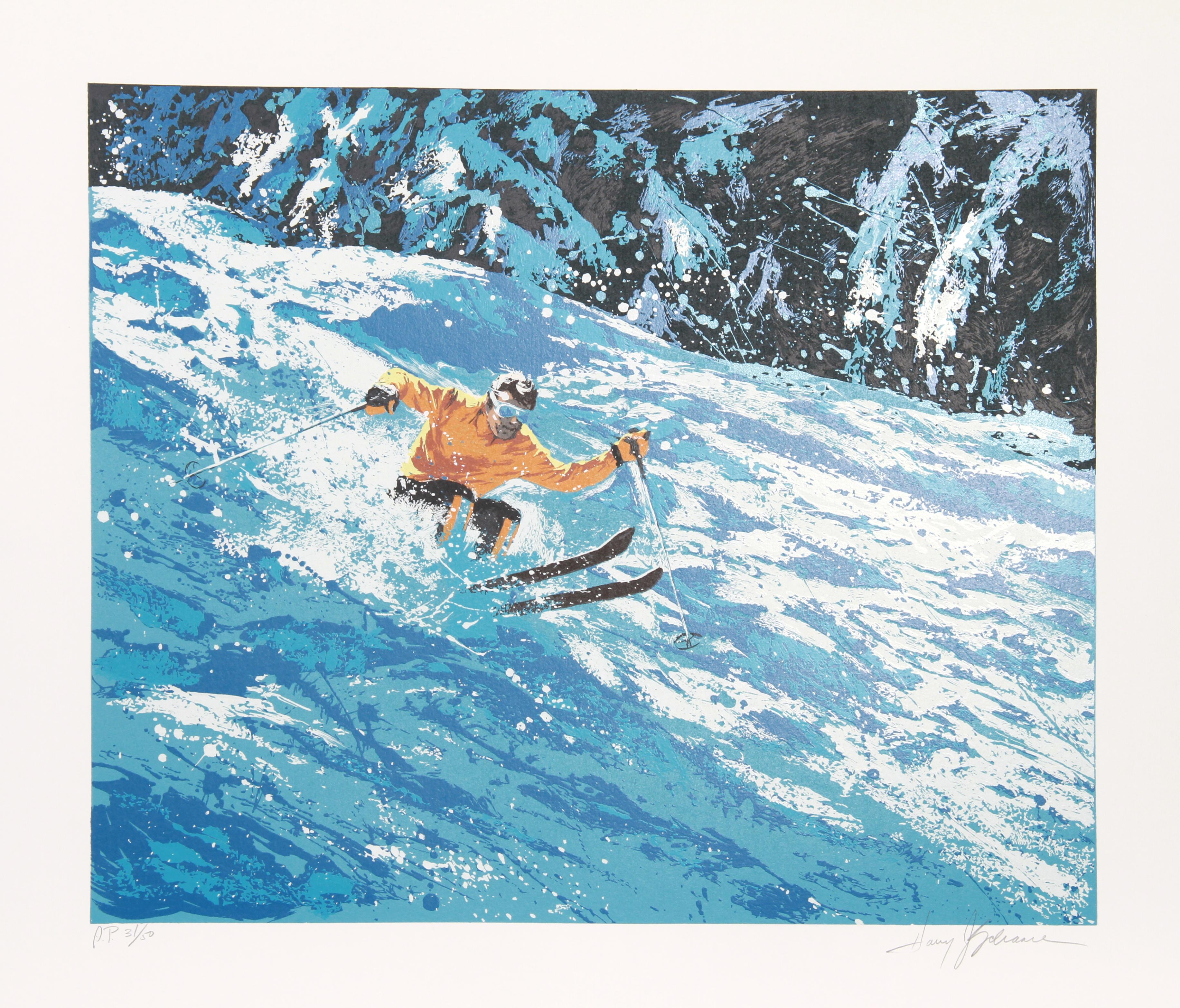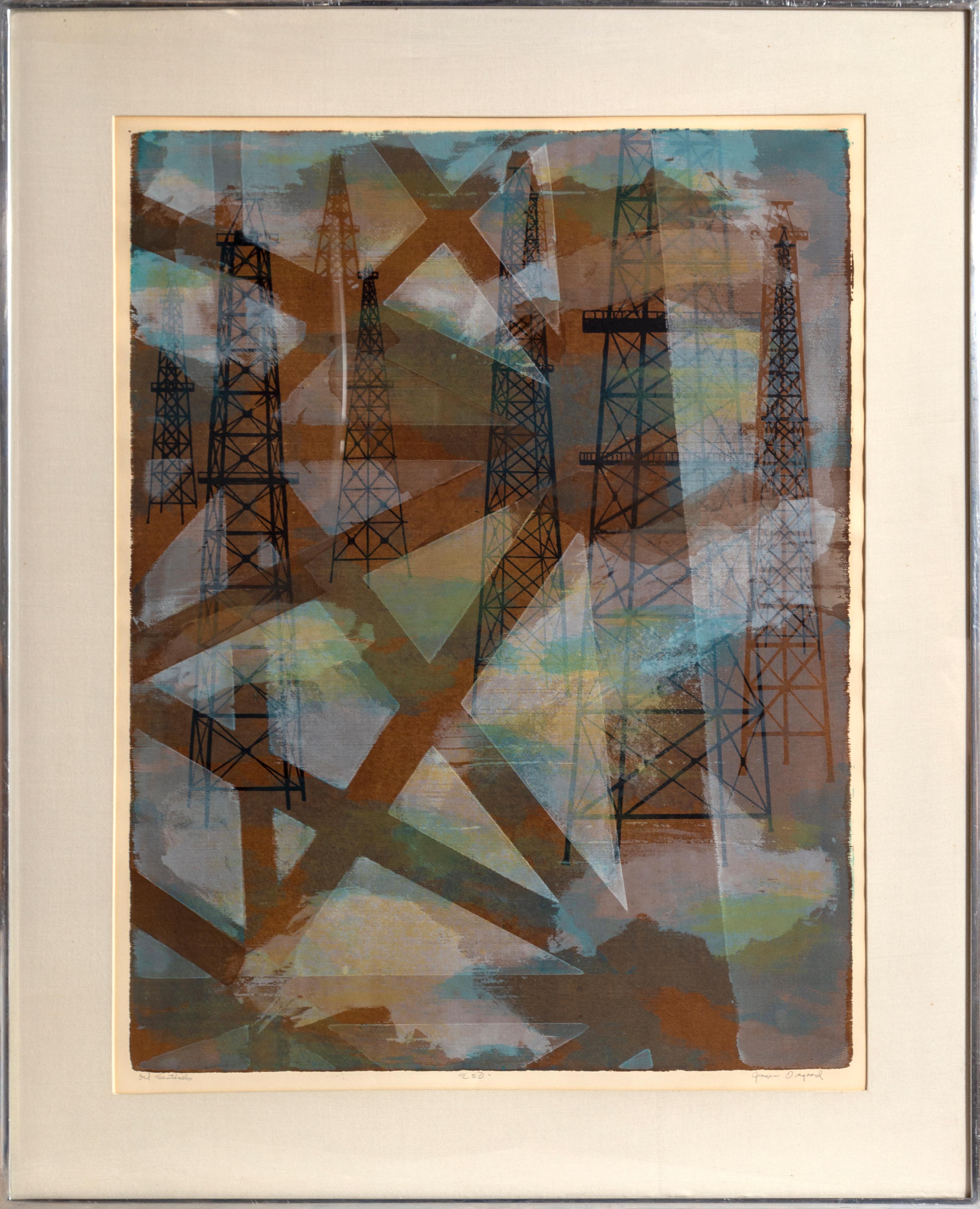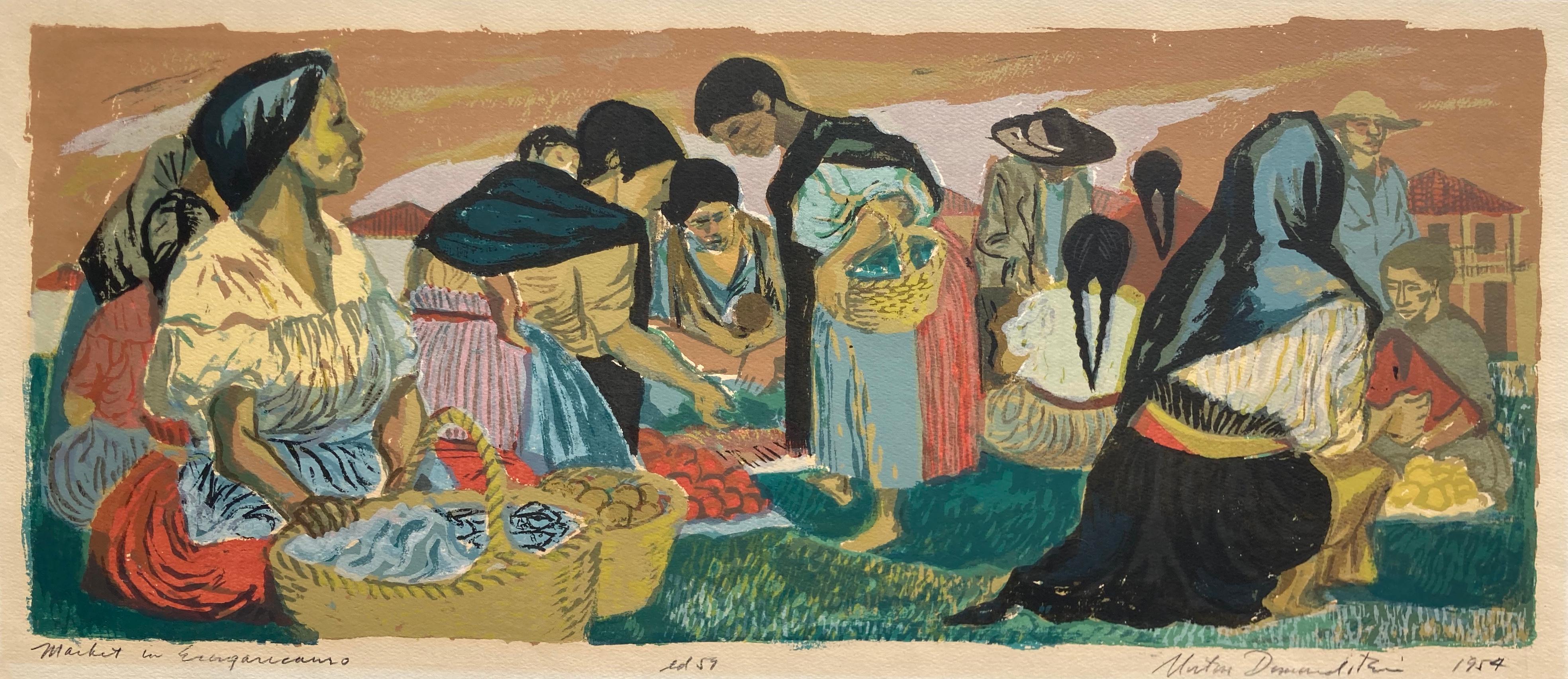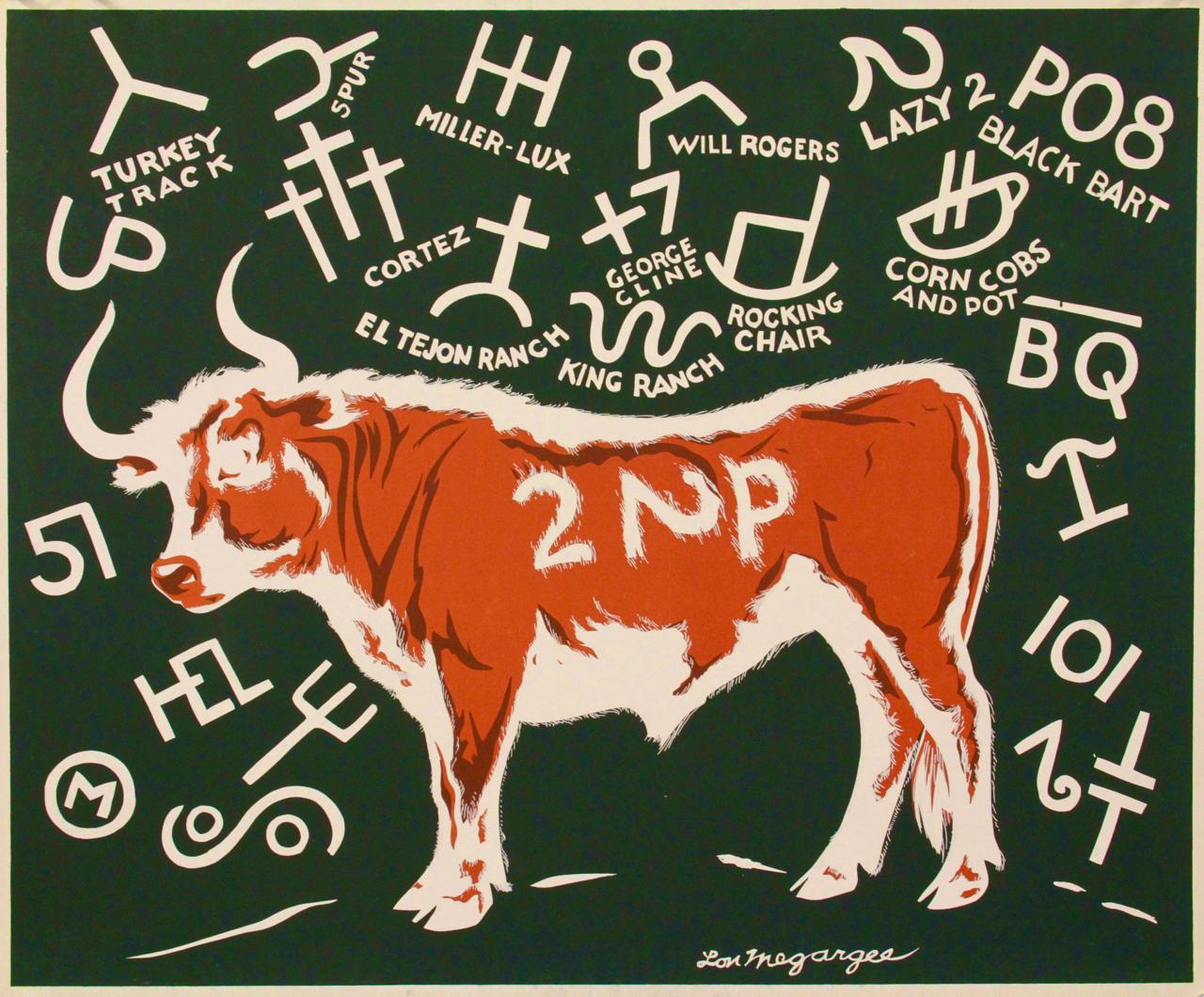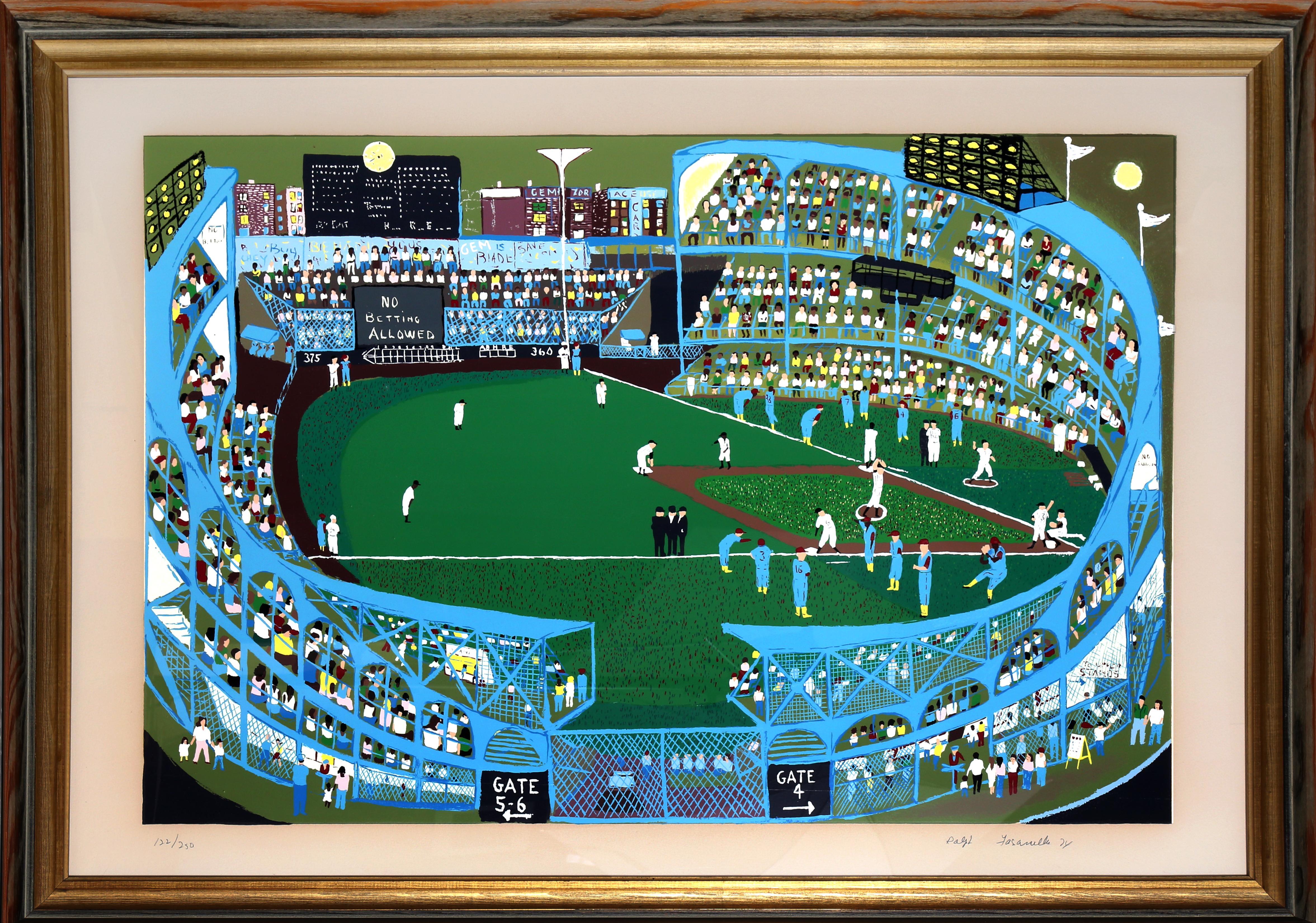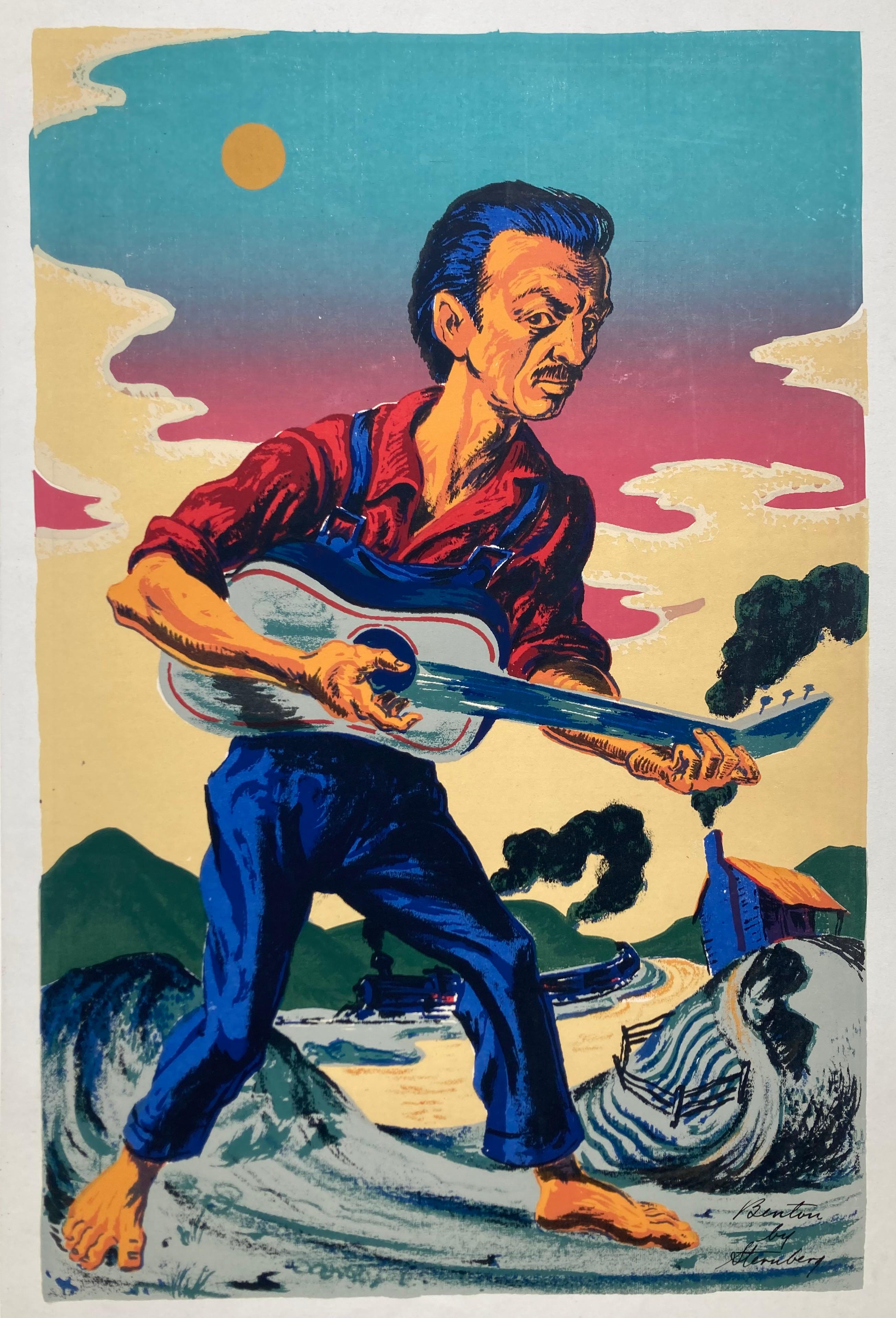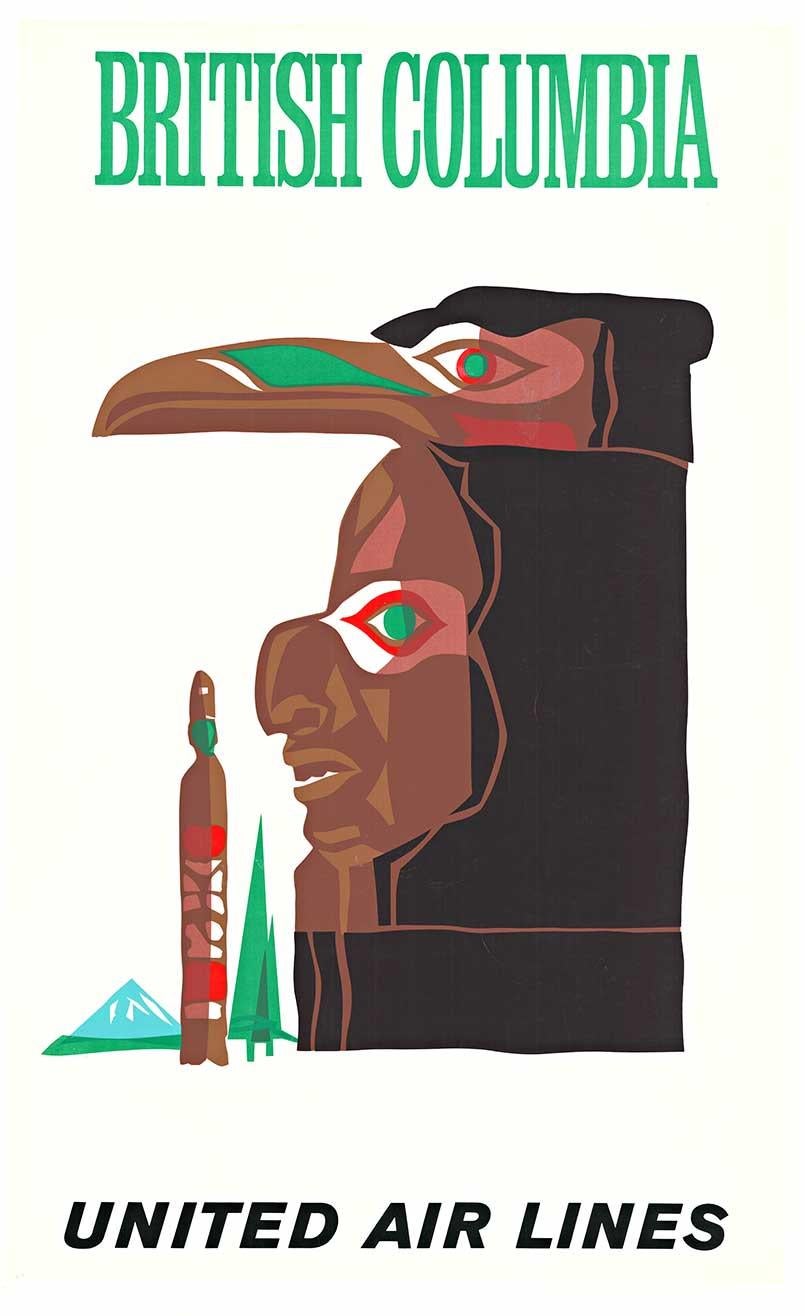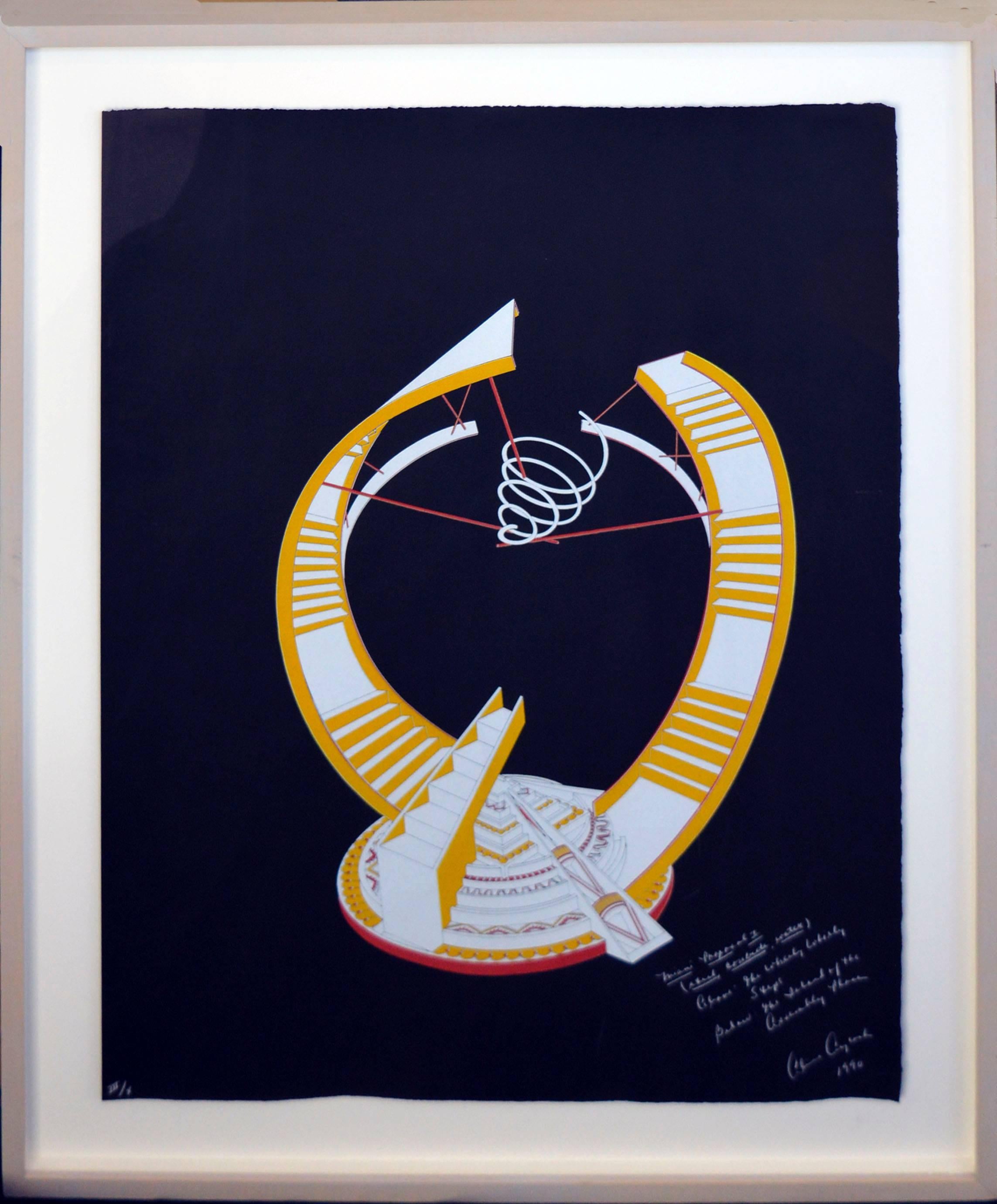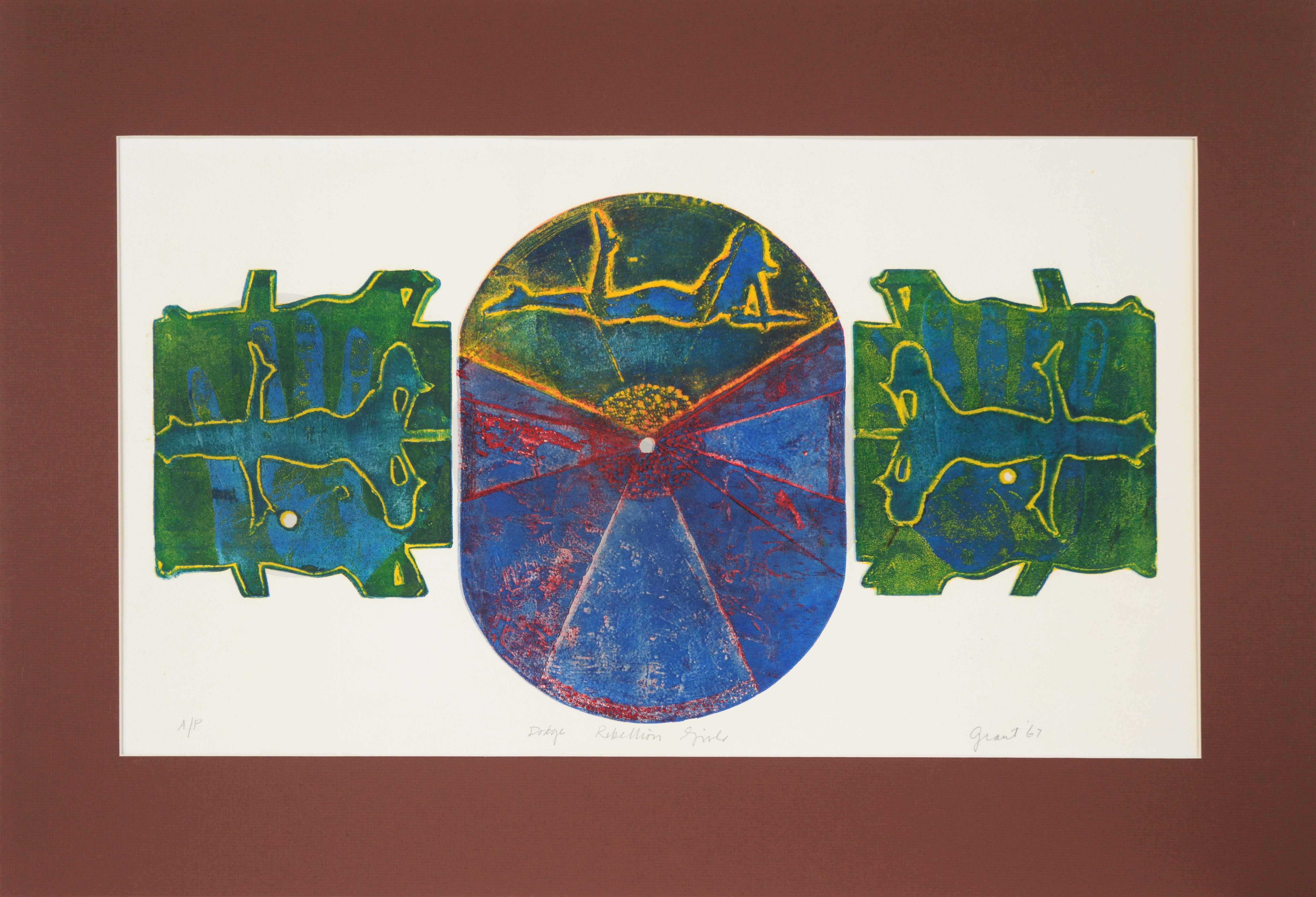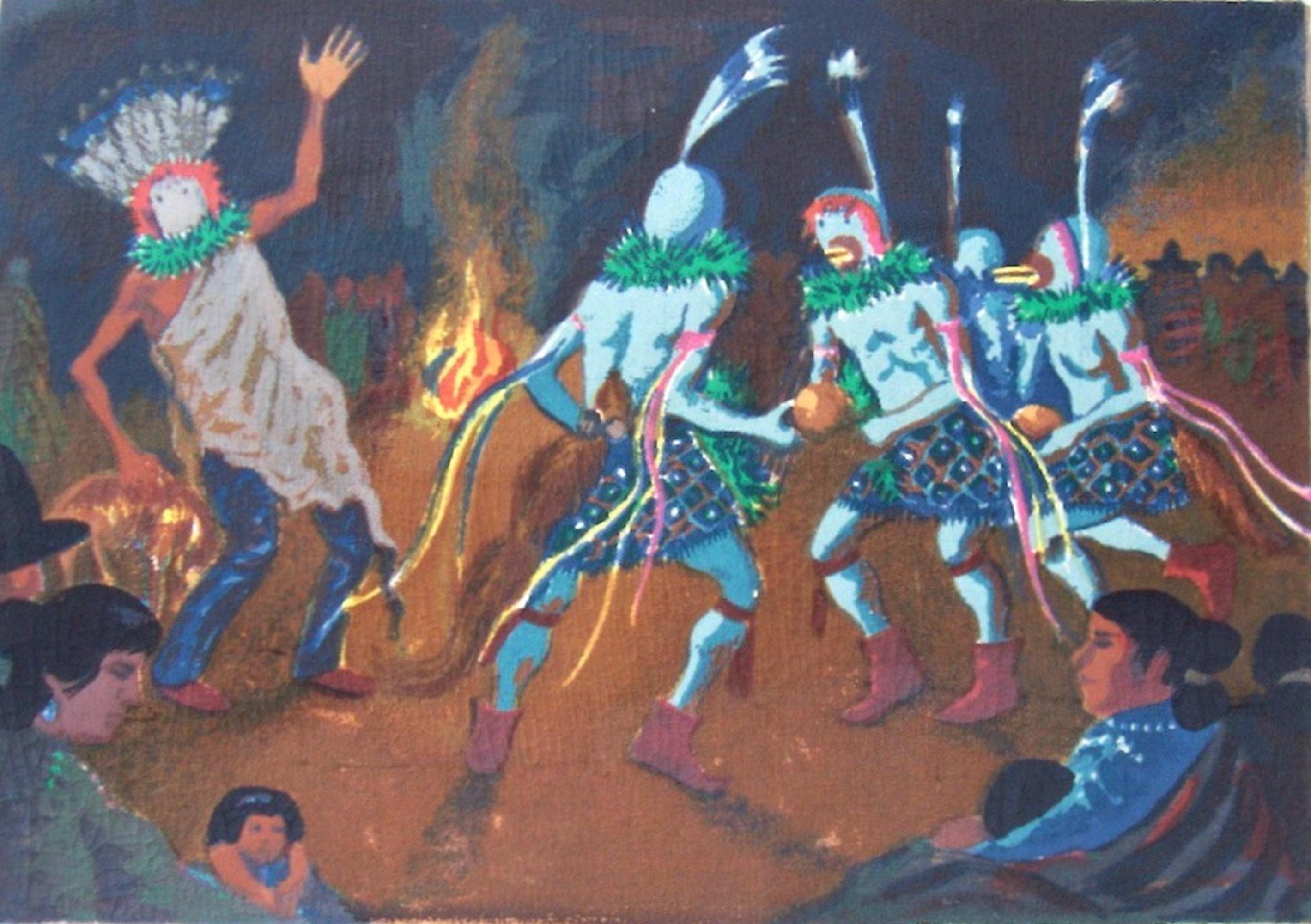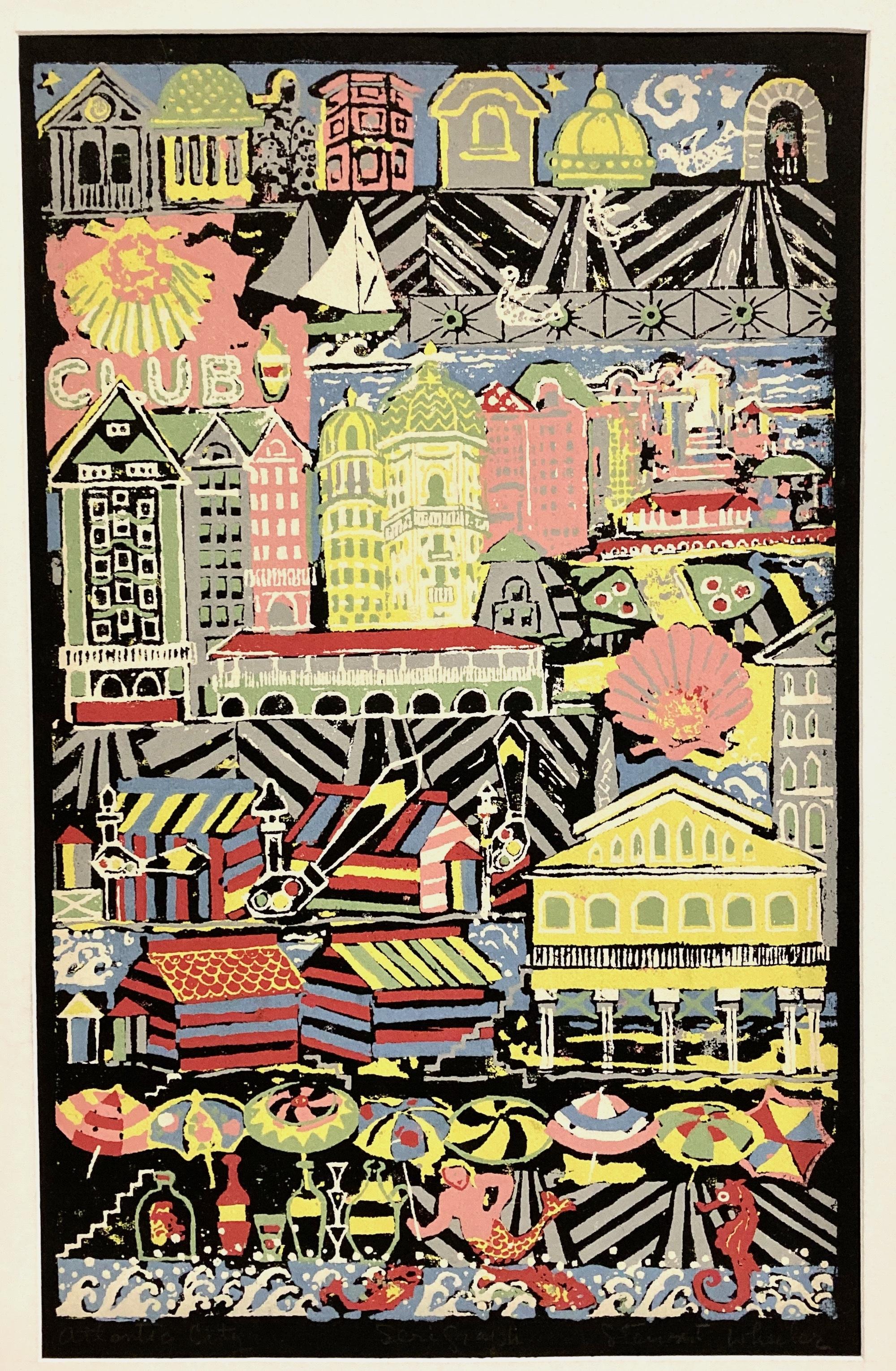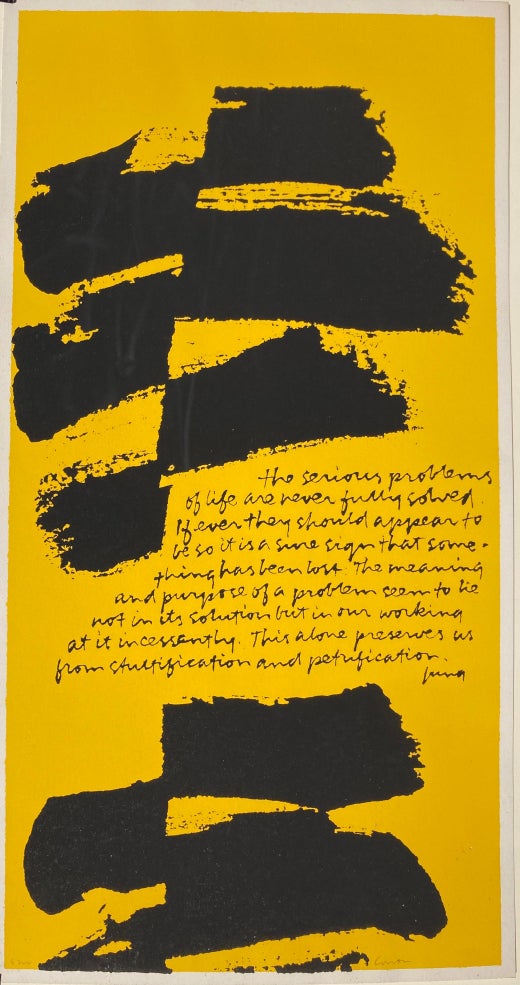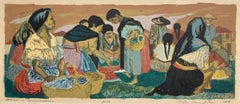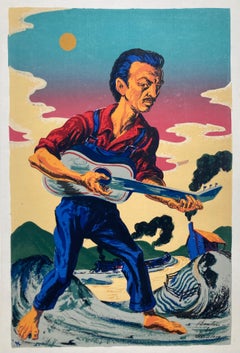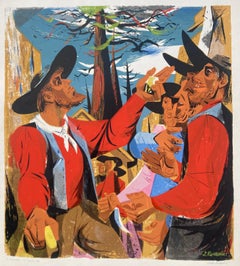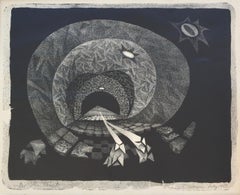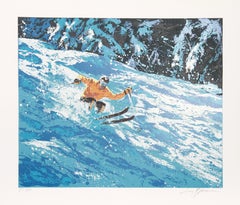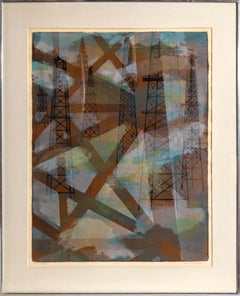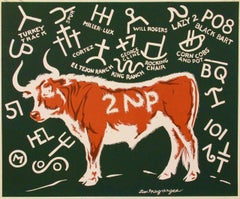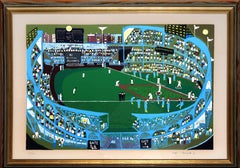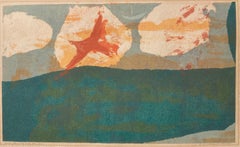
BIRD FLAMING INTO THE SUN
View Similar Items
Want more images or videos?
Request additional images or videos from the seller
1 of 11
Mary Corita (Sister Corita) KentBIRD FLAMING INTO THE SUN1961
1961
Price:$1,250
About the Item
- Creator:Mary Corita (Sister Corita) Kent (1918-1986, American)
- Creation Year:1961
- Dimensions:Height: 10.375 in (26.36 cm)Width: 12.75 in (32.39 cm)
- Medium:
- Movement & Style:
- Period:
- Condition:
- Gallery Location:Santa Monica, CA
- Reference Number:1stDibs: LU411312247822
Mary Corita (Sister Corita) Kent
Corita Kent (1918–1986) was an artist, educator, and advocate for social justice. At age 18 she entered the religious order Immaculate Heart of Mary, eventually teaching and then heading the art department at Immaculate Heart College. During the course of her career, her artwork evolved from using figurative and religious imagery to incorporating advertising images and slogans, popular song lyrics, biblical verses, and literature. Throughout the ‘60s, her work became increasingly political, urging viewers to consider poverty, racism, and social injustice. In 1968, she left the order and moved to Boston. After 1970, her work evolved into a sparser, introspective style, influenced by living in a new environment, a secular life, and her battles with cancer. She remained active in social causes until her death in 1986. At the time of her death, she had created almost 800 serigraph editions, thousands of watercolors, and innumerable public and private commissions.
About the Seller
5.0
Recognized Seller
These prestigious sellers are industry leaders and represent the highest echelon for item quality and design.
Established in 1977
1stDibs seller since 2016
289 sales on 1stDibs
Typical response time: 1 hour
Associations
International Fine Print Dealers Association
Authenticity Guarantee
In the unlikely event there’s an issue with an item’s authenticity, contact us within 1 year for a full refund. DetailsMoney-Back Guarantee
If your item is not as described, is damaged in transit, or does not arrive, contact us within 7 days for a full refund. Details24-Hour Cancellation
You have a 24-hour grace period in which to reconsider your purchase, with no questions asked.Vetted Professional Sellers
Our world-class sellers must adhere to strict standards for service and quality, maintaining the integrity of our listings.Price-Match Guarantee
If you find that a seller listed the same item for a lower price elsewhere, we’ll match it.Trusted Global Delivery
Our best-in-class carrier network provides specialized shipping options worldwide, including custom delivery.More From This Seller
View AllMARKET IN ERONGARICUARO
By Morton Dimondstein
Located in Santa Monica, CA
MORTON DIMONDSTEIN (NY 1920 - LA 2000)
MARKET IN ERONGARICUARO 1954
Serigraph, silkscreen. Signed titled and dated in pencil. Image 10 ¼ x 25 ½ inches. Large full sheet 17 1/4 x 30...
Category
1950s American Modern Figurative Prints
Materials
Screen
THOMAS HART BENTON
By Harry Sternberg
Located in Santa Monica, CA
HARRY STERNBERG (American, 1904-2001)
THOMAS BENTON, 1943. Color screenprint on gray card stock wove paper. Edition of 30. Signed "Benton by Sternberg" in ink, by hand by the artist...
Category
1940s American Modern Figurative Prints
Materials
Screen
DISCOVERY OF GOLD - Very Large Serigraph - WPA Artist - California Murals
By Anton Refregier
Located in Santa Monica, CA
ANTON REFREGIER (1905 – 1979)
DISCOVERY OF GOLD, 1949. Color serigraph. Signed and numbered in pencil, edition of 90. Image 23 ¼ x 21 ¾" Large sheet, 29 3/4 x 25 ¼”. Printed title...
Category
1940s American Modern Figurative Prints
Materials
Screen
Tunnel /Target
By June Wayne
Located in Santa Monica, CA
JUNE WAYNE (1918 - 2011)
THE TUNNEL II, 1951 (B.69; G.14; Conway 67)
Lithograph, signed, numbered, dated July 1951 and titled incorrectly The Target.
Edition 35. 15 3/4 x 19 3/4 inc...
Category
1950s American Modern Abstract Prints
Materials
Lithograph
$975 Sale Price
39% Off
MANHATTAN CLIFFS (Large Lithograph)
By Mark Freeman
Located in Santa Monica, CA
MARK FREEMAN (1908 - 2003)
MANHATTAN CLIFFS, 1947
Lithograph (offset?) with 2 color plates. Signed, titled and dated. 19 1/2 x 15 in., large grey sheet, 22 3/8 x 17 1/2 in. Very good condition. A large and very strong image of New York.
Category
1940s American Modern Landscape Prints
Materials
Lithograph
$600 Sale Price
38% Off
WITHOUT A NET
By George Scribner
Located in Santa Monica, CA
GEORGE SCHREIBER (1904 – 1977)
WITHOUT A NET c. 1944
Lithograph, signed in pencil lower right. Image 8 7/8 x 13 5/8 inches, sheet 10 5/8 x 15 ½ inches.Edition approximately 250 as p...
Category
1940s American Modern Figurative Prints
Materials
Lithograph
$460 Sale Price
20% Off
You May Also Like
Skiing II, Pop Art Screenprint by Harry Schaare
By Harry Schaare
Located in Long Island City, NY
Skiing II
Harry Schaare, American (1922–2008)
Date: 1979
Screenprint, signed and numbered in pencil
Edition of 300, AP 50
Image Size: 20 x 24 inches
Size: 26 in. x 30 in. (66.04 cm x...
Category
1970s American Modern Landscape Prints
Materials
Screen
Oil Sentinels, Modern Screenprint by Ginger Osgood
Located in Long Island City, NY
An original hand-signed and numbered screenprint by noted American modern artist, Ginger Osgood (1918 - 2000) depicting Oil Derricks in an abstract lands...
Category
Mid-20th Century American Modern Landscape Prints
Materials
Screen
2 Lazy 2 P
Located in Phoenix, AZ
2 Lazy 2P, ca. 1939
Lon Megargee
Serigraph
20 x 24 inches
Signed in screen
Original serigraph print by Lon Megargee 1883 - 1960
Featured in "Hot Irons" by Oren Arnold and John Hale, 1940
SHIPPING CHARGES INCLUDE SHIPPING, PACKAGING & INSURANCE
Lon Megargee created this serigraph from his commission with Oren Arnold and John Hale to do their dust jacket for the book, " Hot Irons", 1940. Arnold and Hale wanted to establish a reference work, an "authority", with a entertaining history about the evolution of the brand. Megargee created a painting of a steer that was branded with the script, 2 Lazy 2 P. Surrounding the steer is a random display of famous brands of ranches in the Southwest. It was well received and must have prompted Megargee to create the likeness as a print.
The brand is described in chapter thirteen, page 207-208 and says, " Ed Stram, who was Arizona state veterinarian for sixteen years, fire-branded his cattle with this peculiar crest. It isn't peculiar unless you have an equally peculiar sense of humor. At a glance it appears to be just another typically unimaginative brand, but it has been used to make many a thousand girls blush, and a few thousand bashful young men as well".
COLLIER GALLERY, FINE ART ESTATE OF LON MEGARGEE
Born and raised in Philadelphia, Pennsylvania, Lon Megargee, at age 13, ran away from his upper class home and went West in 1896 led by his zest for the wild and adventuresome life. There he established a reputation as a cowboy painter and illustrator with work most associated with Arizona Brewing Company ads featuring humorous aspects of cowboy life.
In his youth, he worked as a free-lance cowboy, exhibition roper, poker dealer, and bronco buster in Arizona, and then went east again to study art in Philadelphia at the Pennsylvania Academy of Fine Arts, and to New York at the Art Students League and Pratt Institute.
He returned to Arizona, living in Cave Creek, Salt River Canyon, Phoenix and the last years of his life near Sedona. His Phoenix home later became a popular hotel and dining place called the Hermosa Inn.
Megargee was a ranch owner and also did oil canvases of the places he loved and the cowboy life he admired. By 1910, he was among the earliest resident artists, and was probably the best known artist in Arizona. His name was first associated with a landscape series of 15 large murals for the Capitol Building, newly constructed just after Arizona became a state in 1912. Another one of his paintings, Elemental, was the first painting by an artist living in Arizona to be acquired for the Municipal Collection of Phoenix. These works were chosen from entries in the State Fair, where he continued to win prizes for figure and landscape painting.
From 1911 to 1953, he did numerous commission works for the Santa Fe Railroad, including a work titledNavajos Watching a Santa Fe Train. Between 1915 and 1930, he also painted in the Los Angeles area of California and had entries in the California State Fair. He died in Cottonwood, Arizona. After his death, theSaturday Evening Post had a double-page reproduction of his painting Cowboy's Dream.
Creator of the iconic logo for the Stetson Hat Company, " Last Drop From his Stetson", still in use today.
Fine Art Estate of Lon Megargee
We offer signed in print and original signature block prints. Custom, hand carved, signature frames, with archival standards and a speciality in hand dyed mats and french matting are provided for a beautiful and timeless presentation.
Megargee explored different mediums; printmaking captivated him in particular. The contrast of the black and white block print method captured perfectly his interpretation of a bold American West. The first print was produced around 1921 and culminated with the creation of “The Cowboy Builds a Loop” in 1933 with 28 images and poetry by his friend, Roy George. Megargee continued producing prints throughout the 1940s and early 50s.
At age 13, Lon Megargee came to Phoenix in 1896 following the death of his father in Philadelphia. For several years he resided with relatives while working at an uncle’s dairy farm and at odd jobs. He returned to Philadelphia in 1898 – 1899 in order to attend drawing classes at the Pennsylvania Academy of the Fine Arts. Back in Phoenix in 1899, he decided at the age of 16 to try to make his living as a cowboy. Lon moved to the cow country of Wickenburg where he was hired by Tex Singleton’s Bull Ranch. He later joined the Three Bar Ranch . . . and, after a few years, was offered a job by Billy Cook...
Category
1930s American Modern Animal Prints
Materials
Screen
Ball Park, Signed Baseball Screenprint by Ralph Fasanella
By Ralph Fasanella
Located in Long Island City, NY
Ball Park
Ralph Fasanella
American (1914–1997)
Date: 1974
Screenprint, signed and numbered in pencil
Edition of 122/250
Image Size: 25 x 37 inches
Size: 31 in. x 43 in. (78.74 cm x...
Category
1970s American Modern More Prints
Materials
Screen
$1,387 Sale Price
25% Off
Original British Columbia United Air Lines travel poster
Located in Spokane, WA
Behold the original British Columbia United Air Lines vintage Travel Poster—a rare gem from the mid-century Modern era. This archival linen-backed beauty is in excellent condition an...
Category
1960s American Modern Figurative Prints
Materials
Screen
Flowers 4, Pop Art Screenprint by Knox Martin
By Knox Martin
Located in Long Island City, NY
Artist: Knox Martin, American (1923 - )
Title: Flowers 4
Year: 1981
Medium: Screenprinton Heavy Hand-Made Paper, signed in pencil
Edition: 300 / HC
Paper Size: 42 x 30 inches
Pri...
Category
1980s American Modern Still-life Prints
Materials
Screen
$640 Sale Price
20% Off
Recently Viewed
View AllMore Ways To Browse
Sister Mary Kent
Sister Corita
Sister Corita Prints
Sister Mary Corita Kent
Mary Corita Kent
Marie Albert
Vintage Devil Art
Vintage Festival Poster
Campbell Soup Cans
Edo Period Woodblock
Hartung Hans
Keith Haring Vintage Poster
Vintage After Five Dresses
Vintage Americana Signs
Vintage Dutch Poster
19th Century Collage
Andy Warhol Self Portrait
Franz Kline Prints
